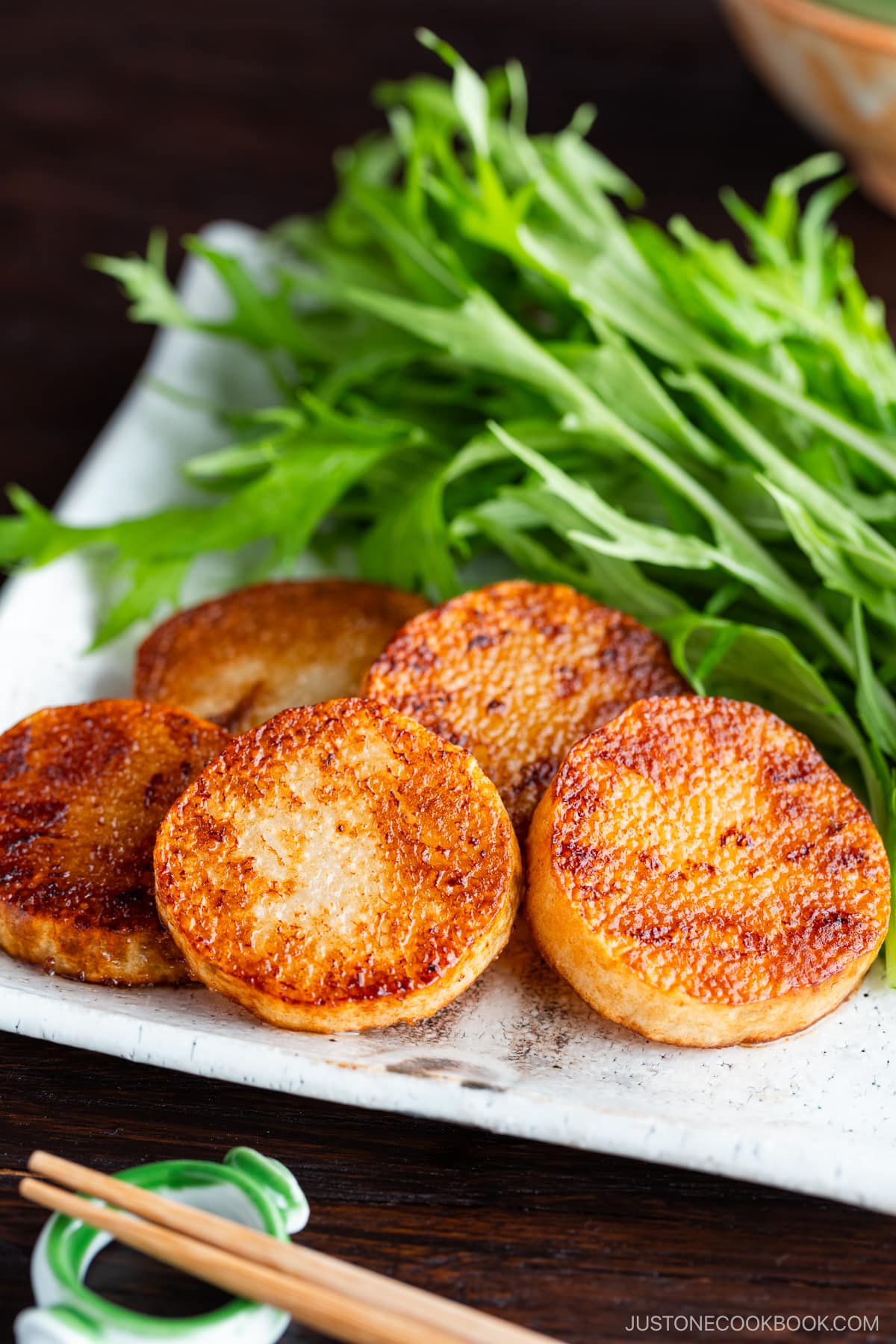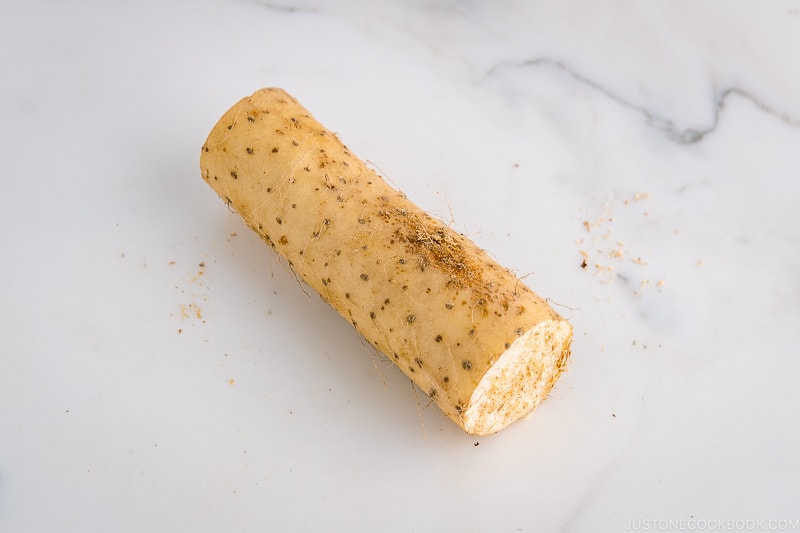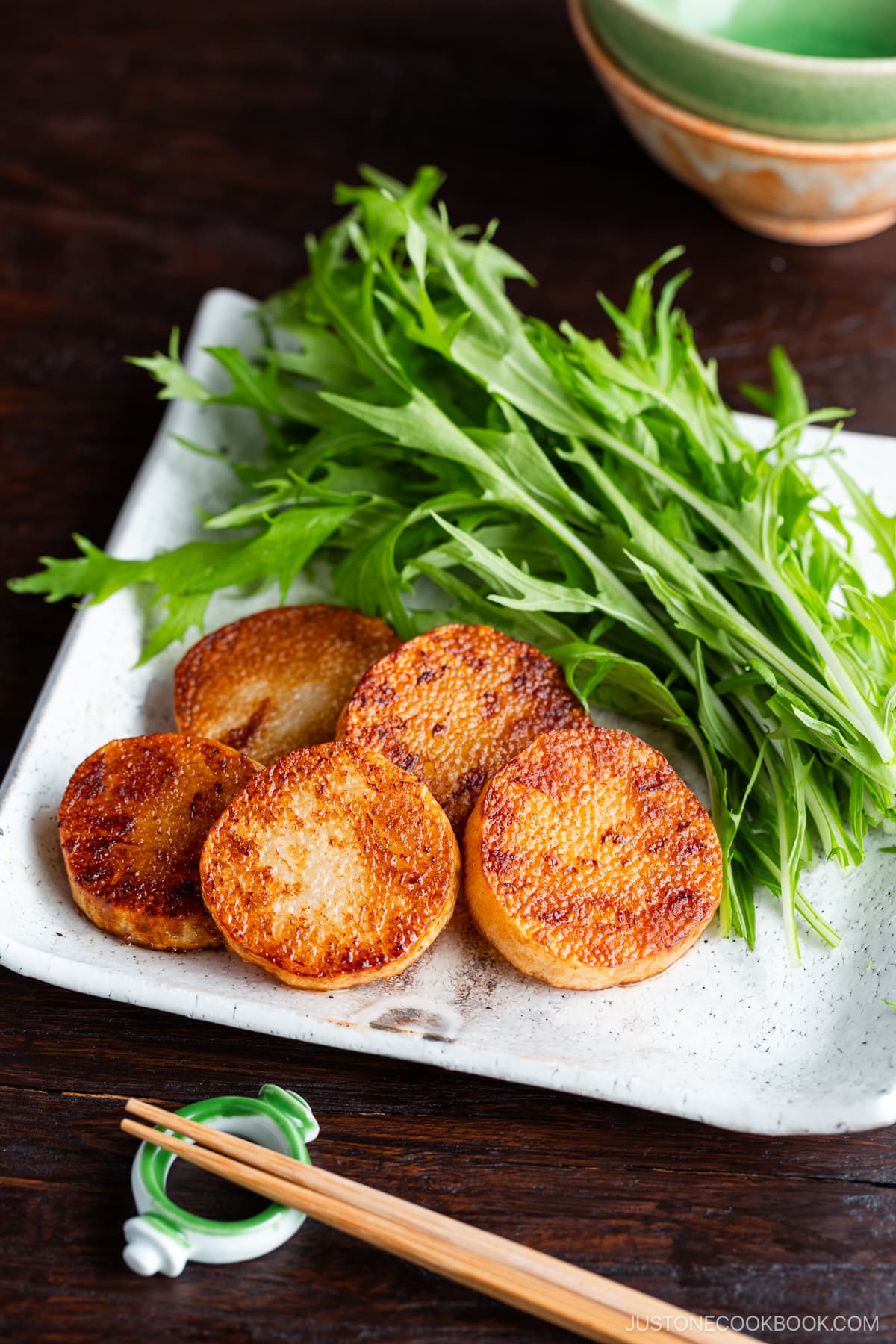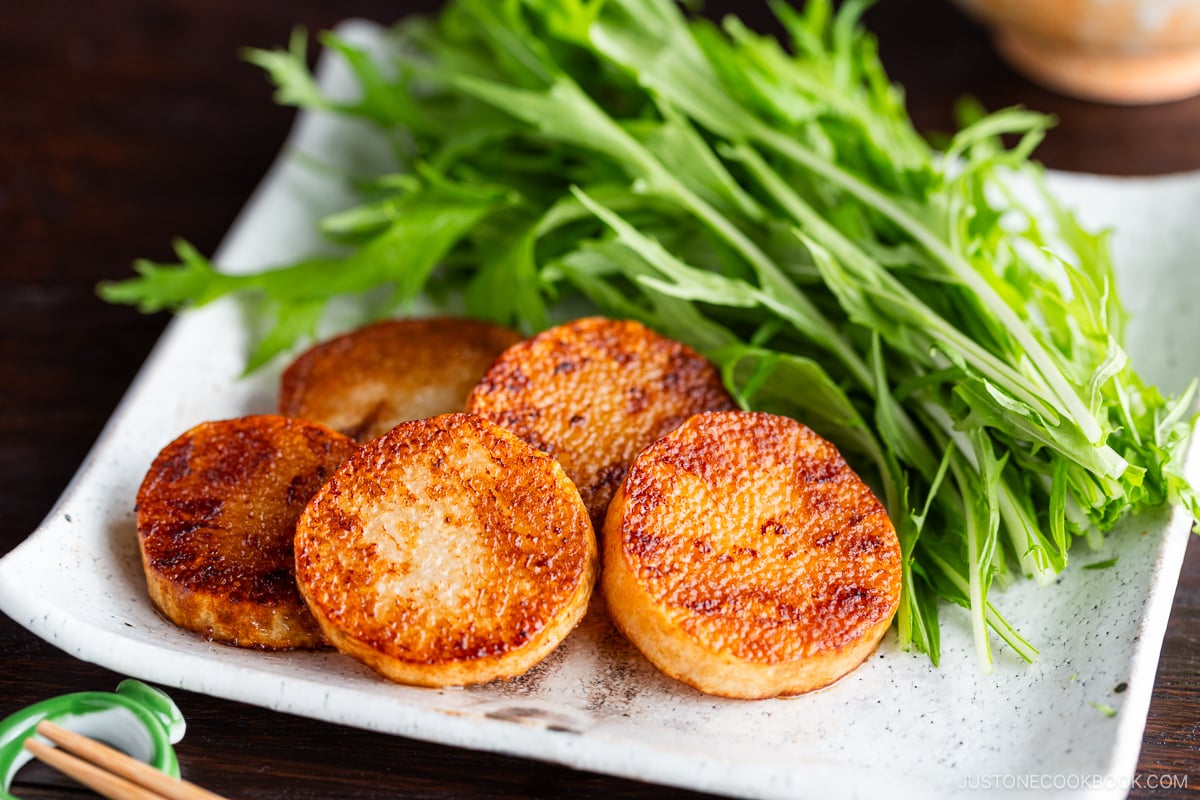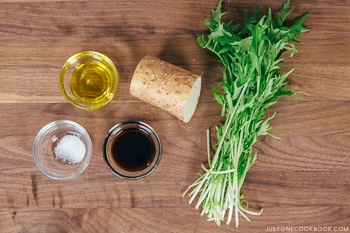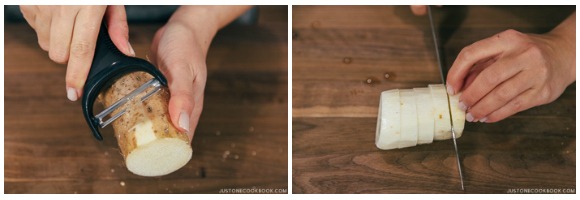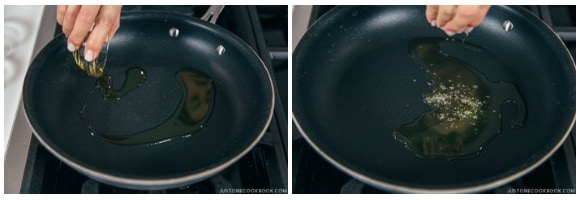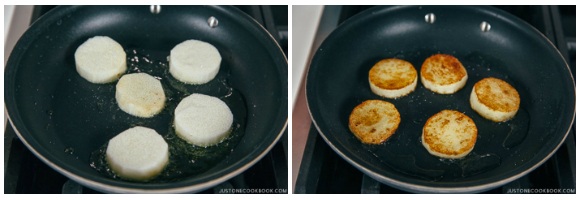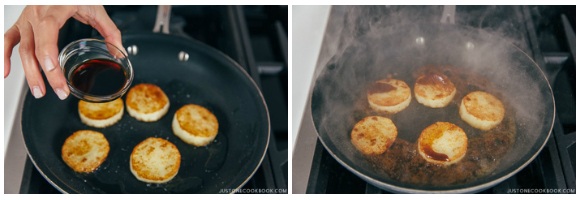Have you tried Sautéed Yam before? The recipe was featured on the popular Japanese TV program called Shinya Shokudo (深夜食堂) or ’Midnight Diner: Tokyo Stories‘ now available on Netflix. The show features Japanese dishes that are more representative of home-cooked recipes than Japanese Restaurant menu items in the US.
Since the drama doesn’t provide detailed ingredients and step by step instructions, I started to share these copycat recipes on my blog. Today’s recipe – sautéed yam (長芋のソテー) was featured in Season 1, Episode 8.
What is Nagaimo?
First thing first. You probably wonder what type of yam is being used in this recipe. It is not the sweet potato “yam” you might be thinking of. If you’re not sure what’s the difference between a yam and a sweet potato, this article might be helpful. So this particular yam used in this recipe is called Nagaimo (長芋) and it looks like this. Sounds or looks familiar? You might have researched this ingredient for Okonomiyaki recipe because grated nagaimo in the Okonomiyaki batter is important for the fluffy texture. Also, if you have traveled in Japan, you might have tried Tororo Gohan (とろろご飯). That white gooey and slimy thing on top of rice, that’s also grated nagaimo.
Why You Should Try This Recipe
To be honest, I was quite surprised at how delicious this simple dish was. If it wasn’t for Midnight Diner inspiring me to recreate the recipes from the show, I probably wouldn’t have come up with a dish like this using nagaimo. I used to only buy nagaimo for making Okonomiyaki and hadn’t made any other nagaimo recipes that my mom used to make for us when growing up. In short, I’m not a fan of nagaimo by itself. So, this dish was a total surprise for me (in a good way). I want to emphasize that if you look at the ingredient list, you see only four ingredients. Besides nagaimo, you only use olive oil, salt, and soy sauce. I was delighted and totally awed by the deliciousness of this dish with my not-so-favorite nagaimo. I think the key “yum” factors come from 3 parts: 1) a nice crunchiness from nagaimo, 2) burnt/charred soy sauce flavors, and 3) the right amount of saltiness that brings bland nagaimo to the next level. I know it’s hard to convince people to enjoy nagaimo, so I pray that my photographs of this simple dish did it justice. The lighting on this day was perfect so I am really happy with the way the pictures turned out. I hope that these sauteed yam looks delicious enough for you to give it a try!
Can’t Find Nagaimo?
Lastly, if you can’t get nagaimo where you live, it’s really difficult to substitute ingredients for it. I cannot recommend using potatoes or other root vegetables as a replacement. Nagaimo cooks very quickly compared to other thick root vegetables and has a unique texture unlike anything else. Wish to learn more about Japanese cooking? Sign up for our free newsletter to receive cooking tips & recipe updates! And stay in touch with me on Facebook, Pinterest, YouTube, and Instagram.
